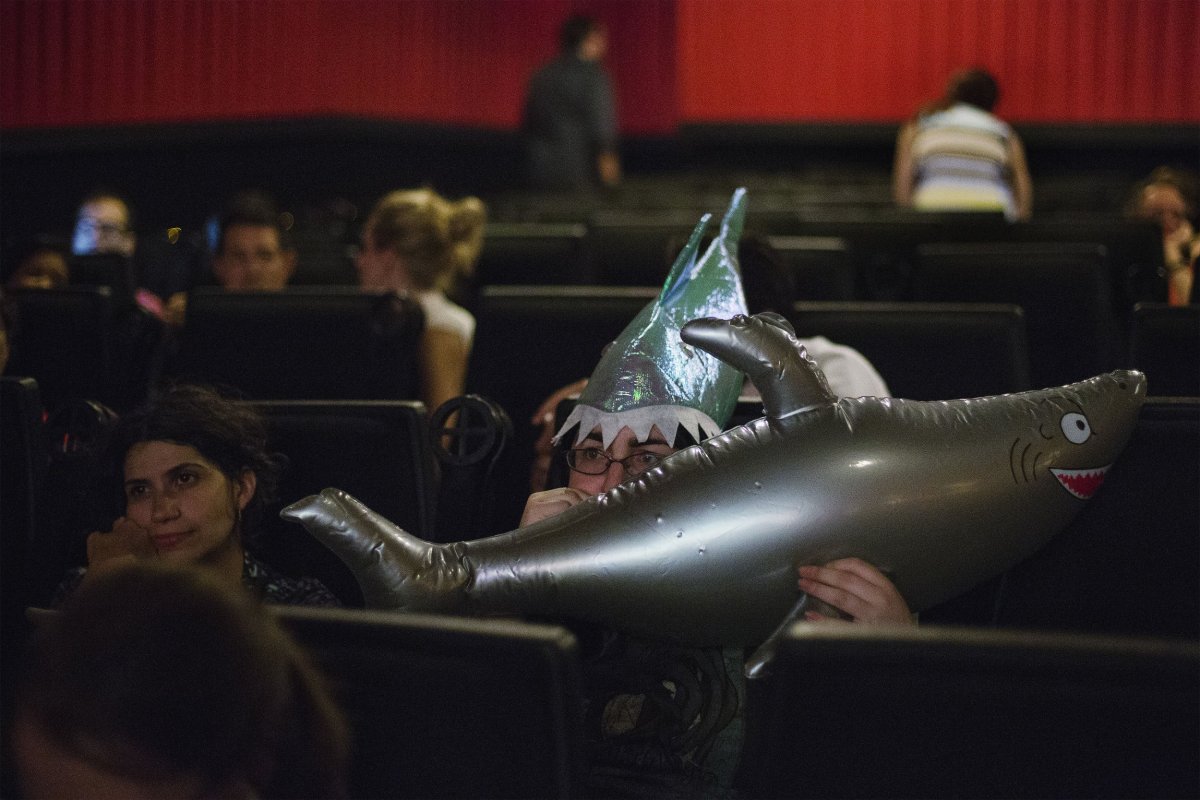
With the recent release of The Shallows, in which a malevolent shark terrorizes a Mexican beach (and a bikini-clad Blake Lively), a new undersea predator has entered the realm of cinematic lore. Hollywood has long been obsessed with monsters that lurk below the surface, perhaps because water covers two-thirds of the planet and maybe also because once man steps off shore, he is no longer atop the food chain. Below we take a look at 10 of the most memorable sea monsters in cinema history (reminder: Wicked Tuna is only a TV show, and the fish themselves are not actually evil):
The Gill-Man
Creature from the Black Lagoon (1954)
Evidence of a prehistoric missing link creature, half-man and half-fish, surviving in the Amazon rainforest leads an expedition of American scientists to venture forth to capture it. (If this sounds uncannily similar to the plot of the 1997 film Anaconda, that's because it is). The Gill-Man, as he came to be known, did not take kindly to strangers and unleashed an array of amphibious attacks, most of them deadly. One of the more iconic monsters in Hollywood history, it was played by Ben Chapman on land and Ricou Browning for its underwater scenes.
"Sharks with frickin' laser beams attached to their their heads!"
Austin Powers: International Man of Mystery (1997)
As part of Dr. Evil's plan to place his nemesis, Austin Powers, in "an easily escapable situation involving an overly elaborate and exotic death," he places a request for the above. Alas, his number two, Number Two, informs the criminal mastermind that such creatures cannot be appropriated, but in their place ill-tempered, mutated sea bass will be used to kill London's most shagadelic spy. "Oh well, that's a start," Dr. Evil says.
The Great White Whale
Moby Dick (1956)
The original film adaptation of Herman Melville's classic novel starred Gregory Peck as Captain Ahab and was filmed partly in—no kidding—Wales. The screenplay was co-written by sci-fi master Ray Bradbury, who confessed to the film's director, John Huston, that he "had never been able to read the damn [book]." (Cliff's Notes did not exist in 1956). A final trivia note: Steven Spielberg had hoped to include a scene in Jaws in which his Ahab-like character, Quint, is seen watching this film, but he was unable to secure permission to use the footage.
Land Sharks
Sharknado (2013)

This made-for-television instant cult classic suggests that San Jose's National Hockey League franchise are not the only land-based sharks in California. A massive waterspout off the coast of Los Angeles deposits man-eating sharks throughout the 323 area code and worse, revives the moribund careers of B-list '90s stars such as Ian Ziering and Tara Reid.
Orca
Orca (1977)
In the undertow created by the massive success of Jaws, a number of "Don't go into the water" films broke the surface (see also The Deep in 1977, and Piranha in 1978), not the least of which was Orca. After Captain Nolan (Richard Harris) kills a pregnant female orca, her enraged mate embarks on a murdering spree in Canadian waters to avenge her death. They don't call 'em killer whales for nothing.
Rogue Waves
The Poseidon Adventure (1972), The Perfect Storm (2000), San Andreas (2015), Bolgen (2015)
Sometimes the most lethal malefactor lurking in the depths is water itself. Beware the rogue wave, which has capsized ships and destroyed the Golden Gate Bridge. Let the record show that the magnificent span linking San Francisco to Marin County has been the target of aquatic animus before, as it was also destroyed in It Came From Beneath The Sea (1955).
The Iceberg
Titanic (1997)
That frozen fortress is an unfairly disparaged villain: after all, the R.M.S. Titanic rammed it, not the other way around. But, as more than 87 percent of an iceberg's mass is submerged, and as it was the below-surface portion that the luxury liner struck as Jack and Rose were ensconced in below-deck shenanigans, it qualifies. Having caused more than 1,500 fatalities, that anonymous ice cube is the most lethal killer on this list.
U-96
Das Boot (1981)
This German film's entire plot is a subplot, as a German World War II U boat wreaks havoc on Allied ships in the Atlantic. Director Wolfgang Peterson brings humanity to the story, as the audience views the war through the eyes of the sub's frazzled crew. Regarded as one of the best World War II films ever made, Das Boot ("The Boat") finds as much terror for the hunter as the hunted. The final scene will leave you slack-jawed.
Giant Squid
20,000 Leagues Under The Sea(1954)
A giant squid lurking miles below the ocean's surface may be difficult to fathom, but Walt Disney brings the sea monster to life in this adaptation of Jules Verne's classic story. Kirk Douglas, as master harpooner Ned Land, battles the multi-tentacled beast in what the film's trailer promises is "the most thrilling sequence ever photographed in motion picture history." If you are scoring at home, that's Kirk Douglas versus a giant squid and his son, Michael, versus a scorned Glenn Close. Call it even.
Bruce
Jaws (1975)
If you could see his dorsal, you probably became a morsel. Simply the most terrifying monster in cinema history, Spielberg's great white has instilled fear in the back of beachgoers' minds for four decades. Still a novice director at the time, Spielberg masterfully created suspense throughout (aided by John Williams' unforgettable score) by providing a shark's-eye view of the attacks. And we don't get a closeup of the beast until Act 3. Though our cartilaginous villain is never referred to by name on screen, crew members in Martha's Vineyard referred to the mechanical shark as "Bruce," a nod to Spielberg's lawyer, Bruce Raynor.
Uncommon Knowledge
Newsweek is committed to challenging conventional wisdom and finding connections in the search for common ground.
Newsweek is committed to challenging conventional wisdom and finding connections in the search for common ground.
About the writer
John Walters is a writer and author, primarily of sports. He worked at Sports Illustrated for 15 years, and also ... Read more
To read how Newsweek uses AI as a newsroom tool, Click here.








